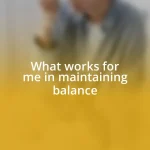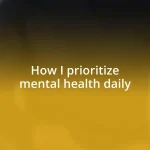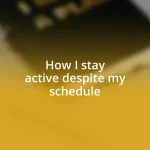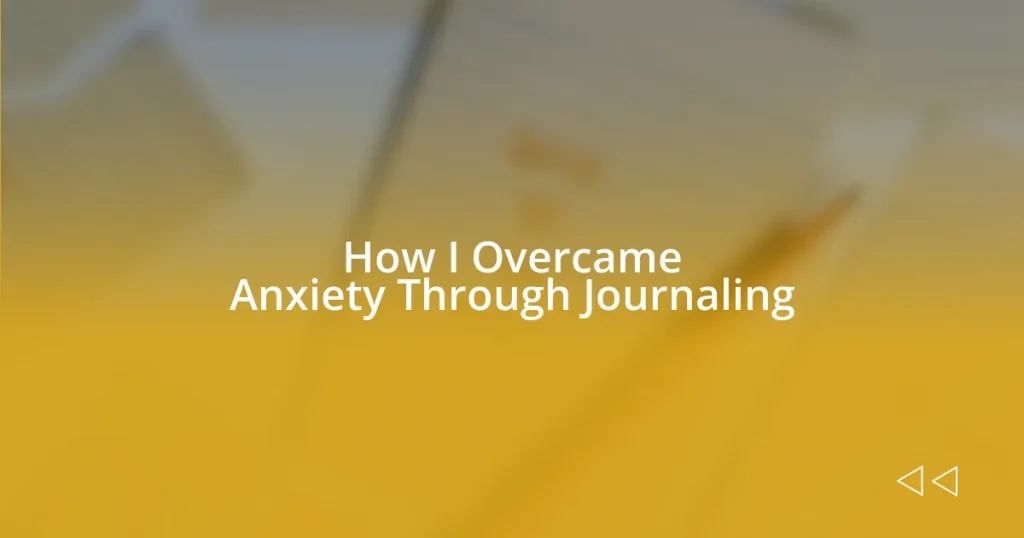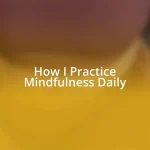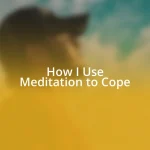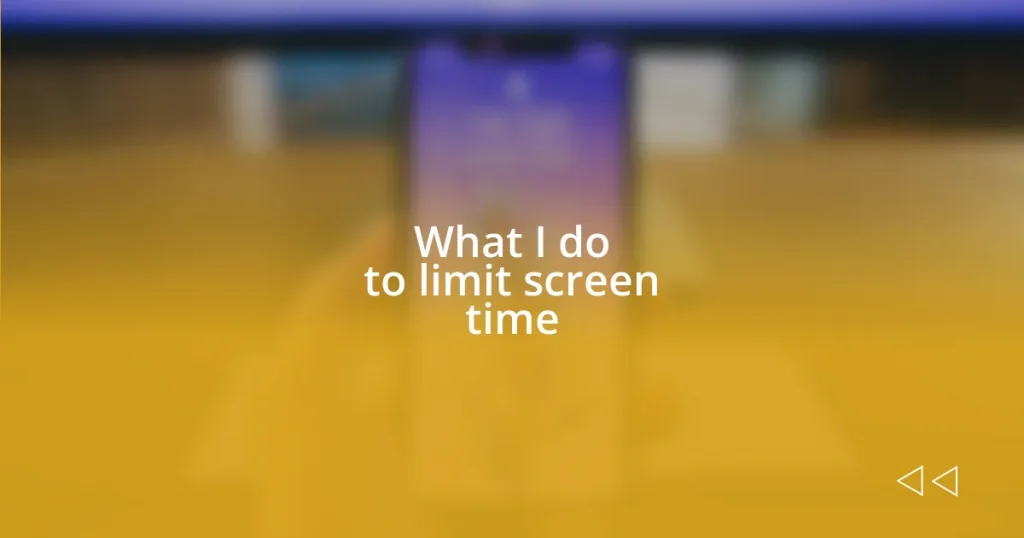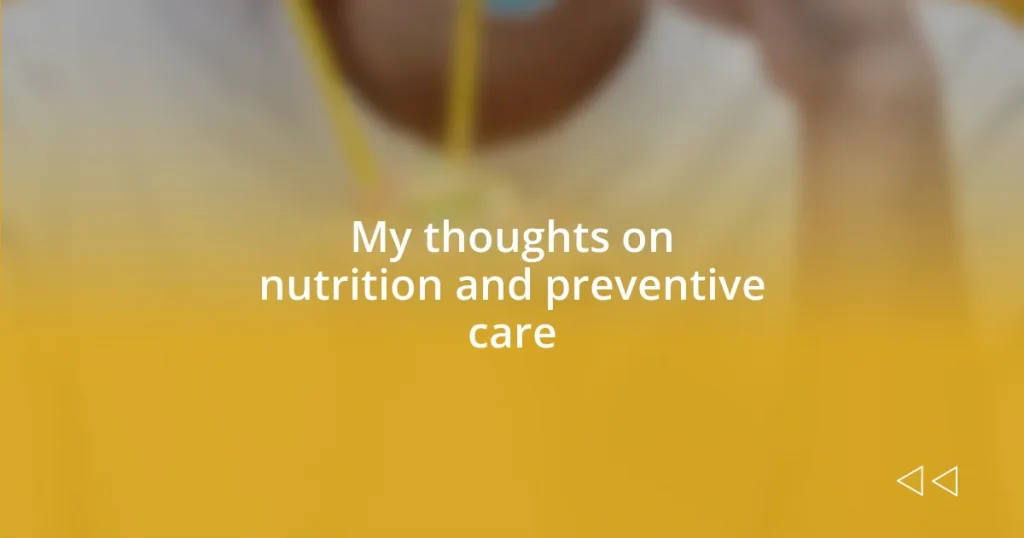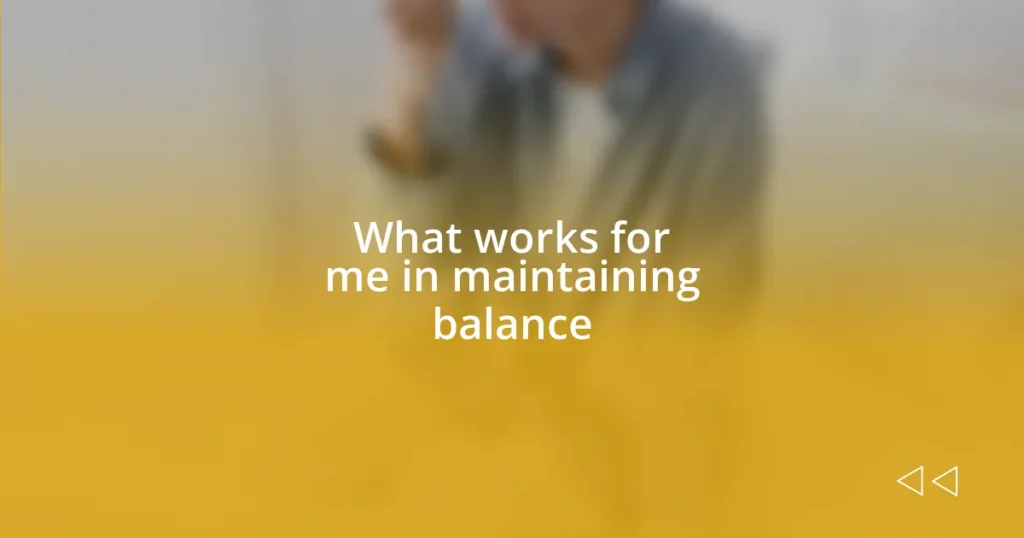Key takeaways:
- Journaling creates a safe space for emotional expression, offering clarity, emotional release, and self-reflection.
- Choosing the right journaling method (e.g., free writing, bullet journaling) tailors the experience and enhances engagement with emotions.
- Establishing a consistent journaling routine fosters self-discovery and provides a dedicated time for reflection, aiding in managing anxiety.
- Combining journaling with mindfulness and physical activities can deepen emotional understanding and spark creativity.
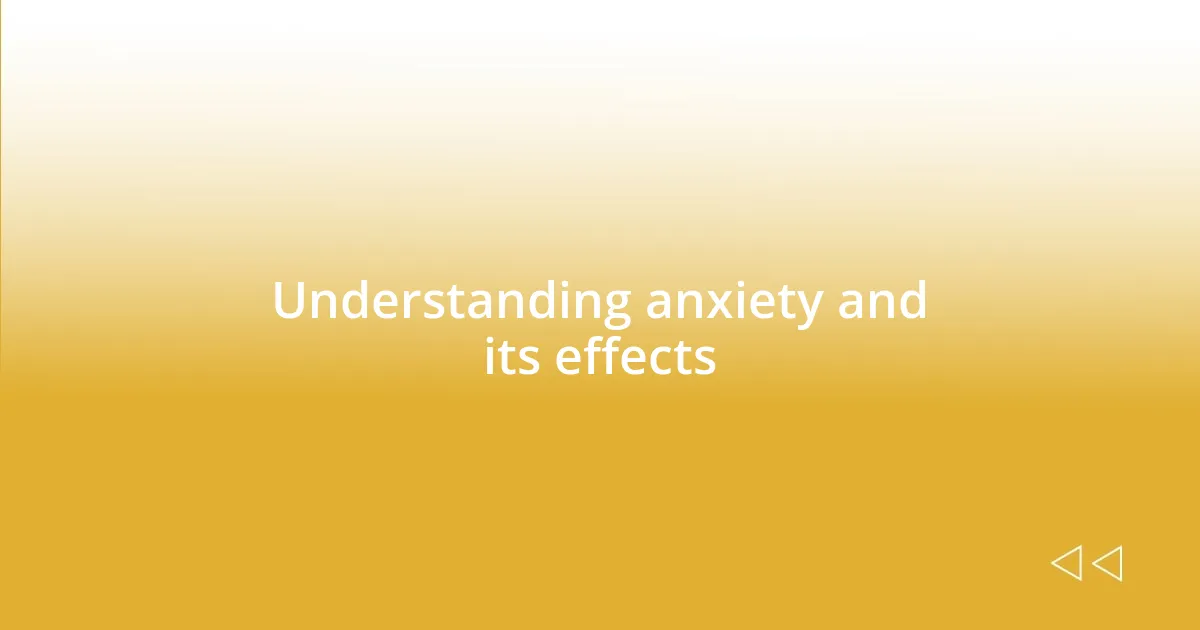
Understanding anxiety and its effects
Anxiety can feel like a heavy weight pressing down on your chest, altering how you perceive the world around you. I remember the first time I experienced a panic attack in a crowded place; it was surreal how quickly the energy switched from enjoying the moment to feeling utterly trapped. Has there ever been a time when anxiety snuck up unexpectedly for you, transforming a simple outing into a battle with your own thoughts?
The effects of anxiety can ripple through various aspects of life, often manifesting as physical symptoms like a racing heart or trouble breathing. I recall trying to focus on a task at work while feeling that familiar knot tightening in my stomach. It made me wonder—how many others deal with this silent struggle, where the mind betrays us in moments we need it most?
Long-term anxiety can lead to a cycle that feels impossible to break, impacting relationships, work, and overall wellbeing. In my journey, I found myself withdrawing from friends, convinced that sharing my feelings would only burden them. It’s a common thought, isn’t it? Yet, I’ve learned that understanding the roots of anxiety can pave the way for healing, helping to unravel those tangled emotions and drive meaningful conversations about mental health.
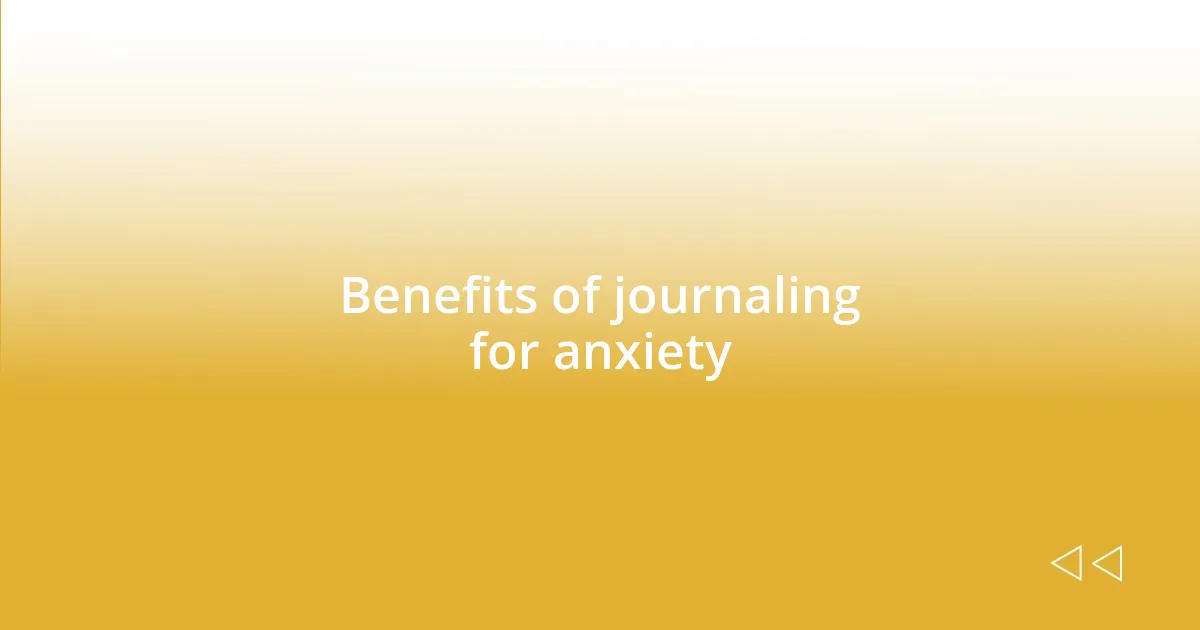
Benefits of journaling for anxiety
It’s fascinating how journaling can create a safe space where you can pour your thoughts onto the page without judgment. I remember the first time I wrote down my feelings; it felt like releasing a pressure valve that had been tightened for far too long. Suddenly, the swirling thoughts became less menacing and more manageable.
Here are some benefits I’ve experienced firsthand:
- Clarity: Writing helps me untangle my thoughts, making it easier to see the core of my anxiety.
- Emotional Release: Journaling serves as a healthy outlet for my fears, which lightens the emotional load I carry.
- Self-Reflection: I often discover patterns in my anxiety, providing insights that I never realized were there before.
- Progress Tracking: Looking back at my entries reveals how far I’ve come, reinforcing the idea that change is possible.
- Mindfulness: The act of writing brings me into the moment, grounding me when I feel overwhelmed.
On tougher days, I find myself returning to my journal, almost like visiting an old friend. I can freely express what’s bothering me, and sometimes, just the act of writing shifts my mood. Reflecting on those entries reminds me that it’s okay to not have everything figured out—and that’s a comforting thought I cherish.

Choosing the right journaling method
Choosing a journaling method that resonates with you can significantly influence your experience and progress in managing anxiety. Personally, I found that some days called for structured writing, while other days welcomed free-flowing thoughts. Once, when I was feeling particularly overwhelmed, I simply scribbled whatever came to mind, and it felt liberating. Finding what works best often involves experimenting with various styles until something clicks.
There are numerous journaling methods to explore, each offering unique benefits. For instance, bullet journaling combines organization with reflection, allowing me to track both my mood and daily tasks. It was a game-changer—seeing my progress visually transformed the way I viewed my anxiety, as I could pinpoint triggers and patterns over time. On the other hand, a gratitude journal encourages a focus on the positive aspects of life, and I found that this practice lifted my spirits during tough phases.
Ultimately, understanding which journaling method aligns with your emotions makes the difference in your journey. Whether you want to engage with deeper feelings or simply jot down a few uplifting thoughts, there’s a method that fits. It’s often about personal preference and what feels right in the moment, so don’t hesitate to try a few approaches until one resonates with you.
| Journaling Method | Description |
|---|---|
| Free Writing | A spontaneous, stream-of-consciousness approach to capture thoughts without structure. |
| Bullet Journaling | A visual method for tracking tasks, moods, and reflections, blending pragmatism with introspection. |
| Gratitude Journaling | Focuses on writing down things you’re thankful for, fostering a positive mindset. |
| Art Journaling | Combines creative expression through drawing and writing, providing a holistic outlet for emotions. |

Establishing a journaling routine
Establishing a journaling routine has been one of the most transformative steps in my journey. I vividly remember when I first committed to writing every morning. It made such a difference to sit down with my coffee and a blank page, allowing my thoughts to flow before the chaos of the day began. It was my moment of calm—a sort of meditation in written form.
At first, consistency was a challenge. Some days, I felt overwhelmed and didn’t know what to write about. But I realized that my entries didn’t need to be lengthy or profound; even a few sentences about how I felt in that moment were enough. Slowly, I found a rhythm, embracing the act itself rather than focusing on the outcome. Have you ever noticed how simply putting pen to paper can bring clarity? It’s as if my mind takes a collective sigh of relief.
I often suggest starting small—maybe just five minutes a day. I found that setting a specific time helped me prioritize this practice. Journaling became something I looked forward to, a sacred space dedicated to my self-discovery. And on those days when I could barely form a thought, a single grateful phrase would often suffice, grounding me. What did you write today? Remember, the important part is showing up and allowing your thoughts to take shape, no matter how messy they seem.

Techniques for effective journaling
Techniques for effective journaling can really elevate your experience and deepen your understanding of your emotions. One trick that worked wonders for me was setting a timer for just 10 minutes. During that time, I wrote without stopping. I remember the first time I tried this—it was like uncovering a hidden treasure within myself. The words flowed freely, revealing thoughts I didn’t even know I had. Have you ever experienced that moment when a rush of ideas spills out? It can be incredibly freeing.
Another technique that I’ve found invaluable is to start with prompts. Listing out simple questions like “What made me smile today?” or “What am I feeling right now?” can truly guide your writing. I recall a day when I felt particularly down and simply couldn’t find the right words. A prompt shifted my focus and opened up a dialogue with myself that sparked insight. It’s fascinating how these little nudges can lead to deeper revelations, isn’t it?
Lastly, don’t underestimate the power of reviewing past entries. I often revisit what I’ve written, and it surprises me how much I’ve grown. Observing recurring themes and how my feelings evolved over time is enlightening. It’s like having a conversation with my past self. Have you ever looked back at your own thoughts and realized how far you’ve come? That reflection can be a powerful motivator to keep journaling.

Reflecting on progress and insights
Reflecting on my journey through journaling has been illuminating. One of the insights that struck me was how often my worries were tied to misconceptions about myself. I remember a particular entry where I poured out my fears about not being enough. Reading that entry weeks later, I was amazed at how those thoughts seemed so distant. It made me realize that the act of writing had the power to challenge and, ultimately, reshape my self-image.
Every week, I dedicate time to look back at my previous entries, and it feels like flipping through a scrapbook of my emotions. One day, I unearthed a line describing a fear of public speaking, and I couldn’t help but chuckle. Just months later, I found myself confidently presenting to a room full of people. That moment solidified how journaling has been a catalyst for change, forcing me to confront my anxieties and acknowledge my growth. Have you ever stumbled upon old entries that revealed just how resilient you’ve become?
The beauty of reflection lies in the patterns it unveils. I often find myself circling back to the same themes, like balance and self-acceptance. When I recognize these patterns, I can deliberately shift my focus. For instance, I remember grappling with feelings of inadequacy during a busy month. By acknowledging and writing about that struggle, I created a clearer path toward self-compassion. Have you noticed similar themes in your own writing? Knowing what challenges I face repeatedly helps me apply targeted strategies to counter them, confirming that journaling isn’t just about writing—it’s about growth.
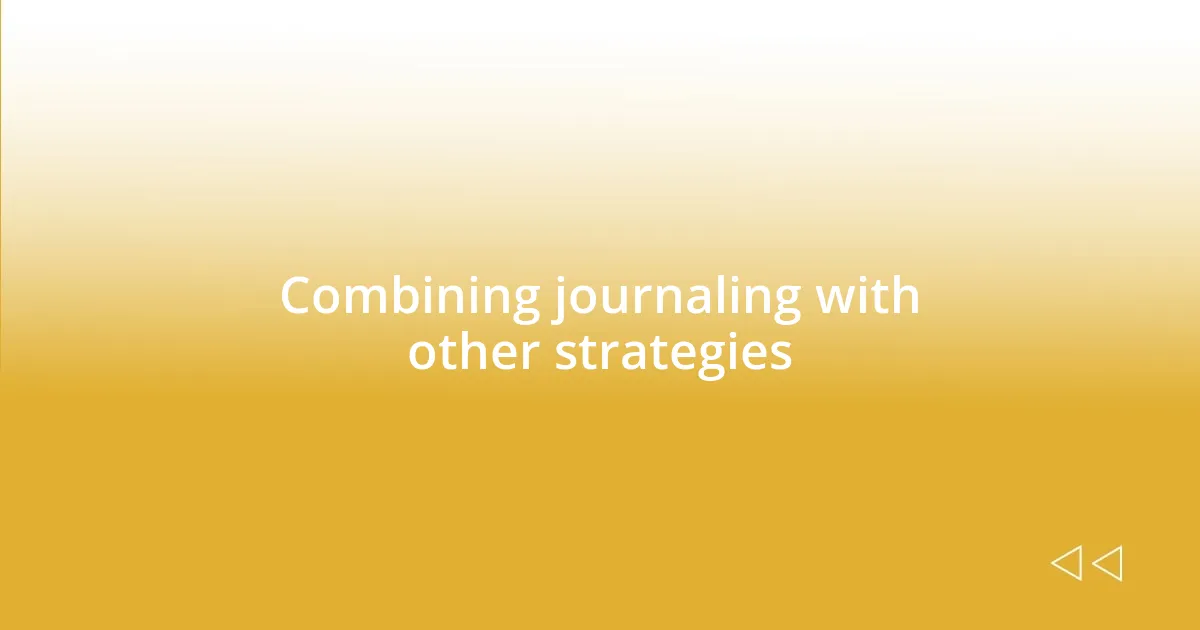
Combining journaling with other strategies
Combining journaling with other strategies has been a game-changer for me. For instance, I often blend my writing with mindfulness exercises. When I take a few moments to sit quietly and focus on my breath before journaling, I find that I’m more in tune with my feelings. It’s like turning a light on in a dim room—suddenly, I can see everything more clearly. Have you ever tried mixing mindfulness with your journaling? It can create a richer, more nuanced exploration of your thoughts.
Another approach that works well is coupling journaling with physical activity. I used to find it challenging to articulate my emotions until I started taking walks while thinking about what I wanted to write. The movement not only cleared my mind but also sparked creativity. I remember one walk where I reflected on a tough day, and by the time I sat down to journal, a flood of ideas and emotions danced on the page. It’s fascinating how the rhythm of walking can unlock thoughts you didn’t even know were there, isn’t it?
I’ve also experimented with combining journaling and art. On days when words fail me, I turn to drawing or doodling to express what I feel. I once created a visual representation of my anxiety, and through that process, I was able to connect aspects of my feelings I hadn’t articulated yet. This fusion of creativity and reflection has given me a deeper understanding of my emotional landscape. Have you found any unique combinations that enhance your journaling experience? Finding what works for you is all part of the journey toward self-discovery.


